The Apple Watch Review
by Joshua Ho & Brandon Chester on July 20, 2015 8:00 AM EST- Posted in
- Wearables
- Apple
- Mobile
- Apple Watch
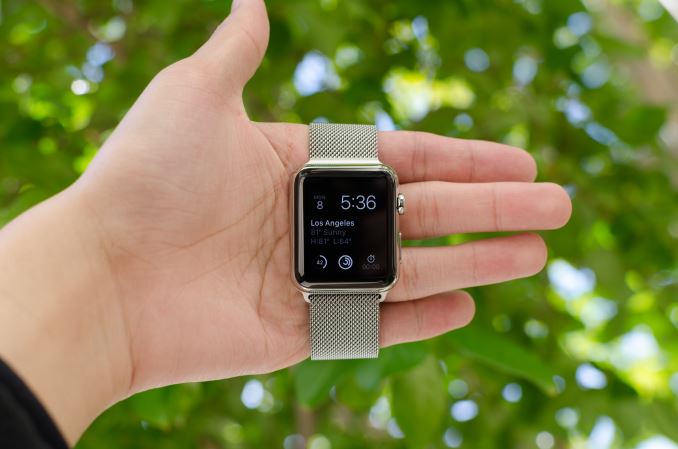
Prior to the launch of the Apple Watch, there had been rumors that Apple would make a watch for quite some time. In a broader sense, the wearables industry has become an area of significant interest as the next growth market after devices like tablets and smartphones as the high-end market became saturated and much of the growth that previously existed in the mobile space started to level out. This has resulted in a new alignment of markets and technology; the markets are ripe for a new device to recapture the wild growth of smartphones, and in the 8 years since the launch of the iPhone the inexorable march of Moore's Law has seen another 4 generations of improvements in technology. This time is finally right, it seems, to take a crack at something even smaller and more personal than the smartphone: the watch.
About two years ago, we put out our first wearable review, which examined Samsung’s Galaxy Gear. In the time since then, Android Wear has been launched, with numerous OEMs launching some form of wearable using Google’s wearable OS. However, Apple remained curiously absent from the field despite numerous rumors suggesting that Apple would soon launch a wearable. Last year, Apple announced the Apple Watch, but it wasn’t until just a few months ago that it finally went on sale.
Consequently, Apple didn’t get a first-movers advantage getting into wearables, though it remains to be seen whether that would even matter. As the creator of the iPhone and frequently on the cutting edge of technology and design, Apple had enough good will with the public to be late, and at the same time with all eyes on them they could not afford to screw up. The end result is that though by no means a slight towards Apple’s competitors, there is a clear distinction between everything that has come before the Apple Watch and everything that will come after. For the consumer market as a whole, the launch of the Apple Watch signifies that wearables have moved beyond the early adopter phase for techies, and are now being pitched at (and purchased by) the wider consumer market.
Normally, it’s easy enough to jump straight into what the device is and what’s new about said device, but in the case of the Apple Watch it’s really important that we explore the world in which this watch exists. The world is divided into people that wear watches, and people that don’t. Apple faces the distinct problem is trying to sell to both audiences, which have very different desires from a watch. The people that already have watches don’t want to give up the almost infinite battery life of conventional watches, high levels of water resistance, or anything else that is an accepted standard for watches.
The people that don’t wear watches are probably the closest thing to a clean slate that we’ll get when it comes to the wearable market. On a personal note, I fall into this camp, as I pretty much grew up in the age of widespread cellphone adoption. One of the convenient things about a phone is that they usually have the time on them, along with alarm and timer functionality. For me, this effectively meant that there was no point to wearing a watch. I also tended to have problems with the logistics involved in wearing a watch. In general, wristbands had an amazing tendency to either be too tight or too loose no matter how I adjusted the band. These issues were also compounded with any sort of physical exertion, as sweat tended to collect under the band which made wearing a watch noticeably more uncomfortable. These ergonomic issues, combined with the lack of functionality in a watch, ultimately made me stop wearing watches. Even before cellphones, wall-mounted clocks were more than sufficient for me when it came to checking the time, although I suspect I was far too young for time to really matter all that much.
Of course, I have been trying out various wearables over the course of the past few years. Although I didn’t try LG’s G Watch, I have been able to use the Pebble Steel and Motorola’s Moto 360. However, it was really a challenge for me to find anything to say about these wearables. They could definitely tell the time, and they had some extra functionality, but many of the same problems remained. The wearables I tested just weren’t all that comfortable to wear, and due to some technology limitations both weren’t really all that compelling to use. They could manage notifications, but other than that I found the functionality to be rather lacking. I often would forget to put them on at all before setting out for the day, and when I did I didn’t feel any particular need to go back to put it on my wrist. After a few months, I completely forgot about these wearables and stopped wearing them. At the time, I honestly felt like wearables could end up being another passing fad because it seemed most wearables faced similar barriers in terms of getting people to keep wearing them. Wearables like Fitbit suffered from a pretty significant abandonment rate, and given that I did the same for both the Pebble Steel and Moto 360 it increasingly felt like this would be a persistent problem.
In this context, it seems easy for Apple to fail. Generally speaking, no one has really figured out how to solve the problem of wearable adoption, chiefly because the functionality offered often wasn’t very compelling, and broadly speaking these wearables were often not well-designed. One of the first places we can start with the Apple Watch is the spec sheet. We can speak in empty platitudes about how specs don’t matter, but in the case of something like Apple Watch they definitely will. The right components won’t ensure success, but the wrong components can ensure a poor user experience.
| Apple Watch 38mm | Apple Watch 42mm | |
| SoC | Apple S1 520MHz CPU | Apple S1 520MHz CPU |
| RAM/NAND | 512MB LPDDR3(?) 8GB NAND |
512MB LPDDR3(?) 8GB NAND |
| Display | 1.32” 272x340 LG POLED | 1.5” 312x390 LG POLED |
| Dimensions | 38.6 x 33.3 x 10.5mm, 25/40/55/54 grams (Sport/Watch/Gold/Rose Gold) |
42 x 35.9 x 10.5mm, 30/50/69/67 grams (Sport/Watch/Gold/Rose Gold) |
| Battery | 205 mAh (0.78 Whr) | 246 mAh (0.93 Whr) |
| OS | WatchOS 1 | WatchOS 1 |
| Connectivity | 802.11/b/g/n + BT 4.0, NFC | 802.11/b/g/n + BT 4.0, NFC |
| Price | $349/549/10,000 (Sport/Watch/Edition) | $399/599/12,000 (Sport/Watch/Edition) |
As we can see, Apple has elected for some relatively conservative specifications. The SoC is relatively low power in nature, and the amount of RAM is probably about right for the kinds of tasks that a wearable will be used for at this time. The display is also of a decent resolution given the display size, and all the necessary wireless connectivity is present. It is notable that Apple is using a relatively small battery, but I suspect that this is necessary in order to fit all of the hardware into the casing of the watch. At least at a high level, it looks like Apple has put the right components into this wearable. However, it's going to take a deep examination of both technology and design to really figure out if Apple has avoided the pitfalls that I've discussed. One of the first and most obvious places to go first is the industrial and material design, which is what we'll talk about next.



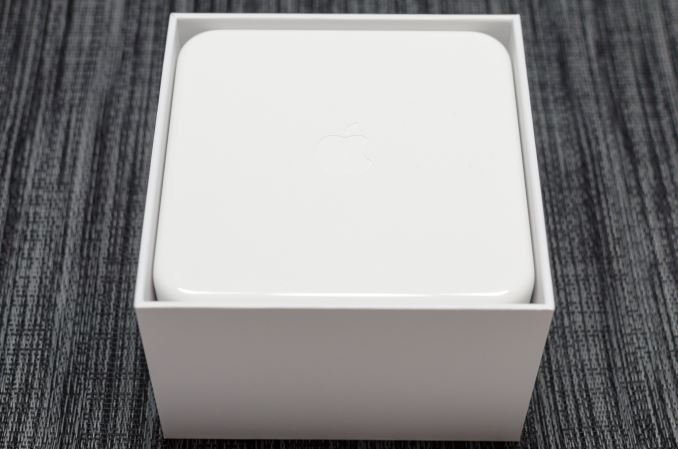
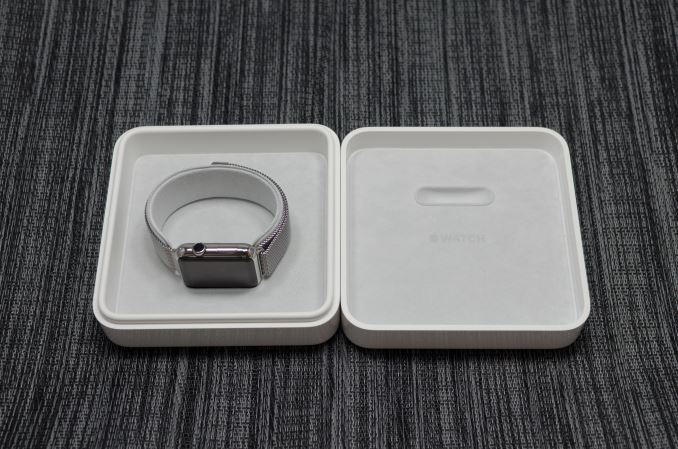
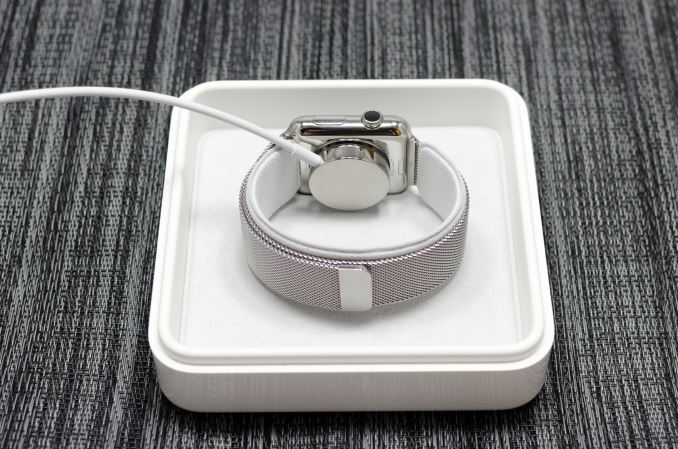

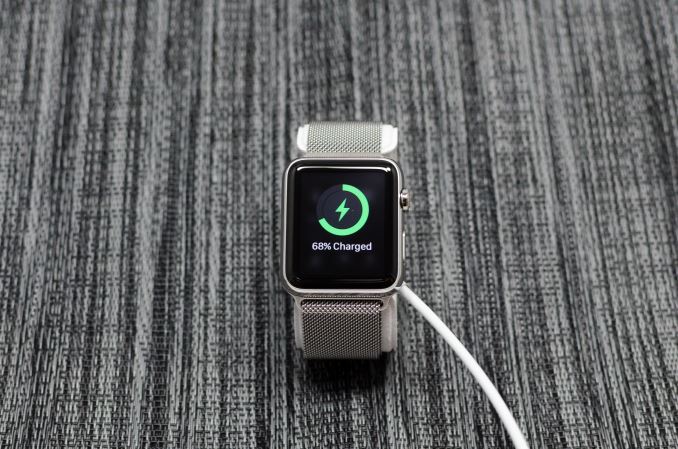








270 Comments
View All Comments
fred deer - Monday, July 20, 2015 - link
Anandtech has put their Apple buttkissing into overdrive now that Anand works for them.Where is the objectivity Anandtech was once famous for? Why does Anandtech feel the need to make excuses for Apples shortcomings? They only do this for Apple products. Here are two examples, the watch is slow, but we know Apple will improve this. The apps aren't very good but they'll get better over time. You suck Appletech.Smog35 - Monday, July 20, 2015 - link
The price is steep to finger this.KPOM - Monday, July 20, 2015 - link
So I see the anti-Apple crowd is out in force here. It's interesting to see a tech reviewer with a mostly positive view. A Wristly survey seems to show that non-techie people like the Watch better than techie people. Perhaps it's because they see the Watch for what it is, and aren't judging it solely as a tech product.At the same time, it's good to get an AnandTech view, since they are very good at addressing the limitations of the technology and giving us a sense of what we can reasonably expect for the future. Move this to a 14nm process, or even a 10nm process in a few years, and the Watch may be a lot more fluid and last even longer.
Impulses - Monday, July 20, 2015 - link
I appreciate having an AT review of the Watch, regardless of tone, if nothing else because they'll be more meticulous than almost any other site so it'll actually be worth reading even if I don't necessarily agree with the conclusion.My only quibble is that there seems to be multiple allusions to other wearables but they're never directly compared or even mentioned. I realize that the iOS buyer that's thinking of getting an Apple Watch is probably not cross shopping much but still...
Any other wearable review will surely feature plenty of direct comparison to the Watch. There's things that work very differently across the field, but even when it comes to highly subjective things like fit there ARE points of comparison.
For instance, something like the distance from strap lug to lug can vary greatly independently of actual watch size and it's something casual blog reviews don't really pay attention to.
dusk007 - Monday, July 20, 2015 - link
I think the anit-AppleWatch vibe is strong with how many posts are phrased here but still there is some truth in it. The reviewer only mentioned the rather old Moto 360 as a state of the art comparison. Nothing about the 42mm diameter Huawei watch that looks really good and much better than the moto 360 which was first to market but is old tech today. G watch R and what they are all called.I love AT reviews about chip architectures and stuff, but where Apple is concerned they always had quite bit lacking in objectivity I feel. Maybe a Huawei Watch review will balance the scales.
Personally I still don't see this device really taking root outside of the die hard Fanboys and tech geek crowd. I have read a few reviews but a wrist watch is still a bother (I never found one uncomfortable just annoying), the Apple one is especially expensive and they seem to solve little that needs solving. It is nonessential, a bit of a techy toy and expensive, I don't see it taking off. iPhones are subsidiced, ipads are family devices, that justifies the cost. For the watch I don't see the big market that whole smartwatch industry is hoping for.
SR22pilot - Monday, July 20, 2015 - link
Data says non-techies are happier than techies. My experience backs it up. My girlfriend loves hers. It has taken longer for it to grow on me. It isn't an iPad that entertains. Apple Watch reduces your time consumed with technology. As for the review, my disagreement is with the statement that heart rate doesn't belong on a glance. My girlfriend had a heart issue and loves having heart rate easily accessible.JoshDouble - Tuesday, July 21, 2015 - link
The Huawei Watch hasn't been released yet. "According to He Gang, an executive from Huawei’s smartphone division, it’s the Android Wear platform that’s causing problems. The company is adapting Android Wear to work without Google’s services in China, where they aren’t available, and to adopt Huawei’s suite of apps instead. It’s a time-consuming and highly technical operation, and has forced Huawei to push the release date until September at the earliest."Haters are gonna hate it, but Apple has nailed it once again and is already dominating this new market.
dusk007 - Tuesday, July 21, 2015 - link
To not have the fragmentation problems, Google from the start did not allow any skinning of Android Wear. I see how that might be an issue for Huawei. But from a pure hardware perspective it is the prettiest device I have seen.Daniel Egger - Monday, July 20, 2015 - link
> So I see the anti-Apple crowd is out in force here. It's interesting to see a tech reviewer with a mostly positive view. A Wristly survey seems to show that non-techie people like the Watch better than techie people. Perhaps it's because they see the Watch for what it is, and aren't judging it solely as a tech product.That's exactly what I don't understand: The Apple Watch is a horrible watch (actually not much different from pretty much any other smartwatch on the market...). Two items are essential for *any* item which wants to be coined a watch: Decent battery life and permanent readability. The Pebble gets very close to that; anything else is simply a complete failure.
Call the Apple Watch a status symbol, a geek tool, a toy, jewelry ... but please not a watch.
tipoo - Monday, July 20, 2015 - link
"I’ve never really used a fitness tracker that keeps track of something as simple as standing time, which seems like an obvious metric to track as soon as you start using the fitness functions of the watch because sitting for extended periods of time can have significant effects on health regardless of how much exercise you do. "I don't really get this aspect of the Apple Watch's fitness part. It makes you stand for a total of minutes more per day, you could fill that entire bar while still sitting most of the time, like I suspect most people would still be doing in office jobs and such. Would that really make a difference? Everyone knows sitting too much is bad, but how can standing for a minute per hour or whatever make any difference?